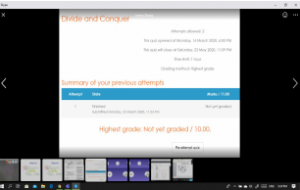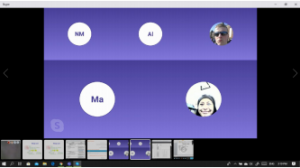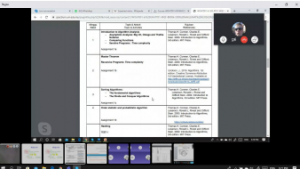 Course overview
Course overview
The course is offered in the Masters of Computer Science program. It introduces students to the analysis and design of computer algorithms. Students build knowledge on advanced design techniques, important classical algorithms and data structures, and their implementation in modern programming environments. Upon completion of the course students are able to demonstrate familiarity with major advanced algorithms, apply advanced design and analysis techniques, and analyze the performance of algorithms.
Participants in piloting
Students that attend this course are enrolled in the Masters of Computer Science programme. 15 students were enrolled in the course in semester 2 of the 2019 – 2020 year. The student body is very international, including students from China, Iran, the Netherlands, Africa, the middle east as well as Malaysia. Some students already work in a software company while others are enrolled in the Masters program full time. Students attended a few physical face-to-face classes before the COVID-19 lockdown order in Malaysia. After that, classes continued on-line.
Timeframe
Spring 2020
Use of ALIEN services and tools
Active learning was the predominant methodology deployed in the course. Two different active learning methods were used, jigsaw and project-based group activities.
Before the COVID-19 restrictions were enforced, active learning took place in the TEALS laboratory.
The jigsaw activity focused on sorting algorithms and involved the following steps:
- Students formed groups of 2 – 3 individuals.
- Students selected a sorting algorithm, such as radix sort, count sort, shell sort, and bucket sort.
- Each group member studied the function of the algorithm and practiced coding it in a 2 hour session. This activity took place in the TEALS working islands using the workstations installed in each.
- In the last hour of the activity each group split in 2 subgroups. The 1st of those stayed on the island while the 2nd explained their algorithm to another group. This process continued until all teams visited all others explaining their work. The advantage of the activity lied in the students’ repeatedly explaining their assignment, which contributed to the understanding of the algorithm and the improvement of communication skills.
The team-based project activity took place entirely during the COVID-19 lockdown. Students were given instructions in tutorial sessions in which study questions were introduced. Students worked in groups to answer the questions in focus and present their findings in slides, video presentations, and video interviews. Evaluation took place through FILA forms that helped monitor team dynamics and contribution.





